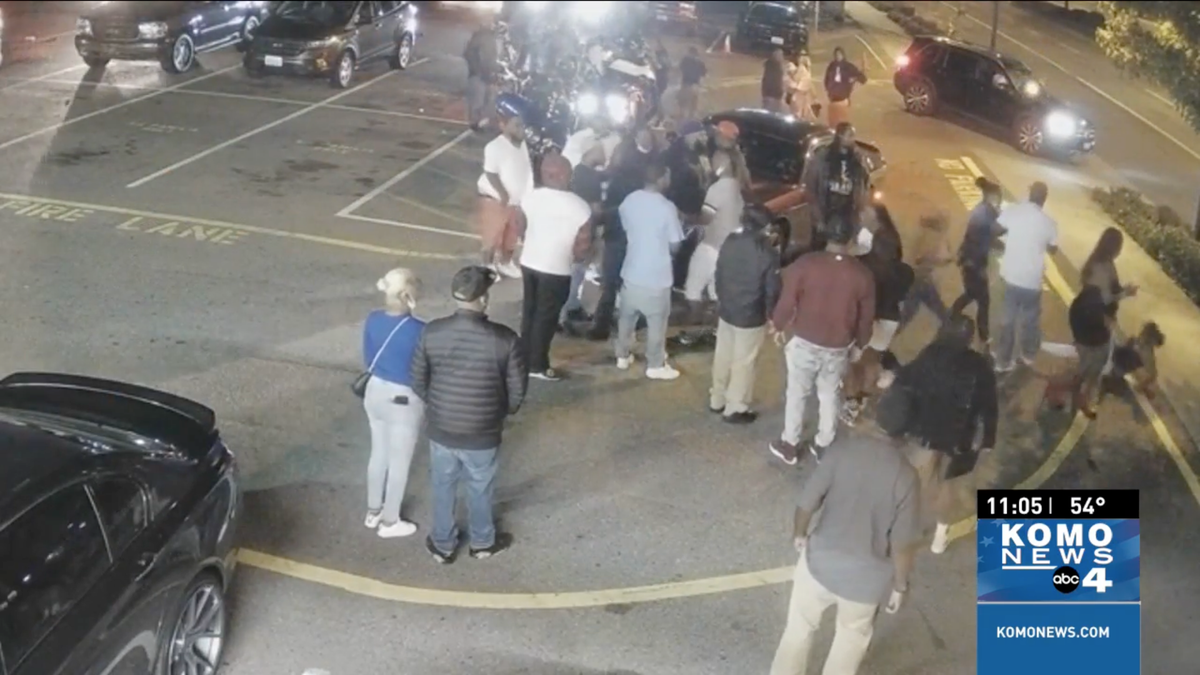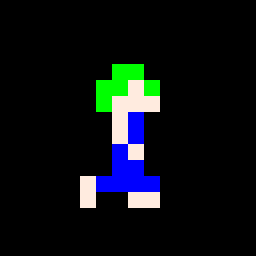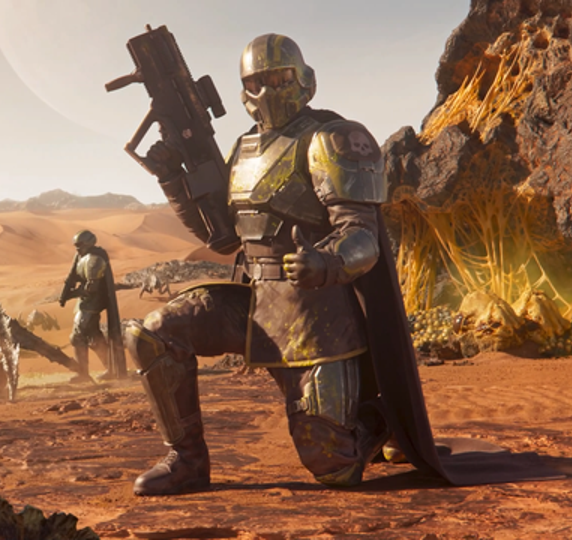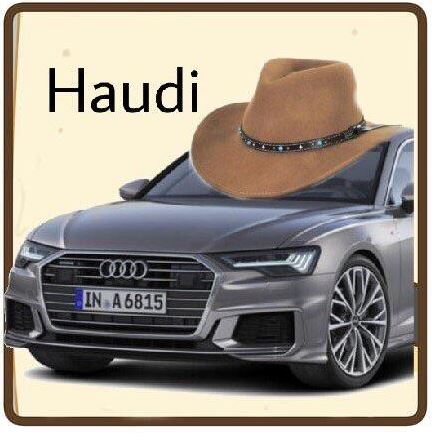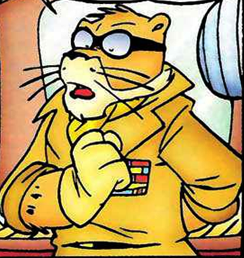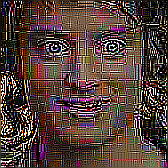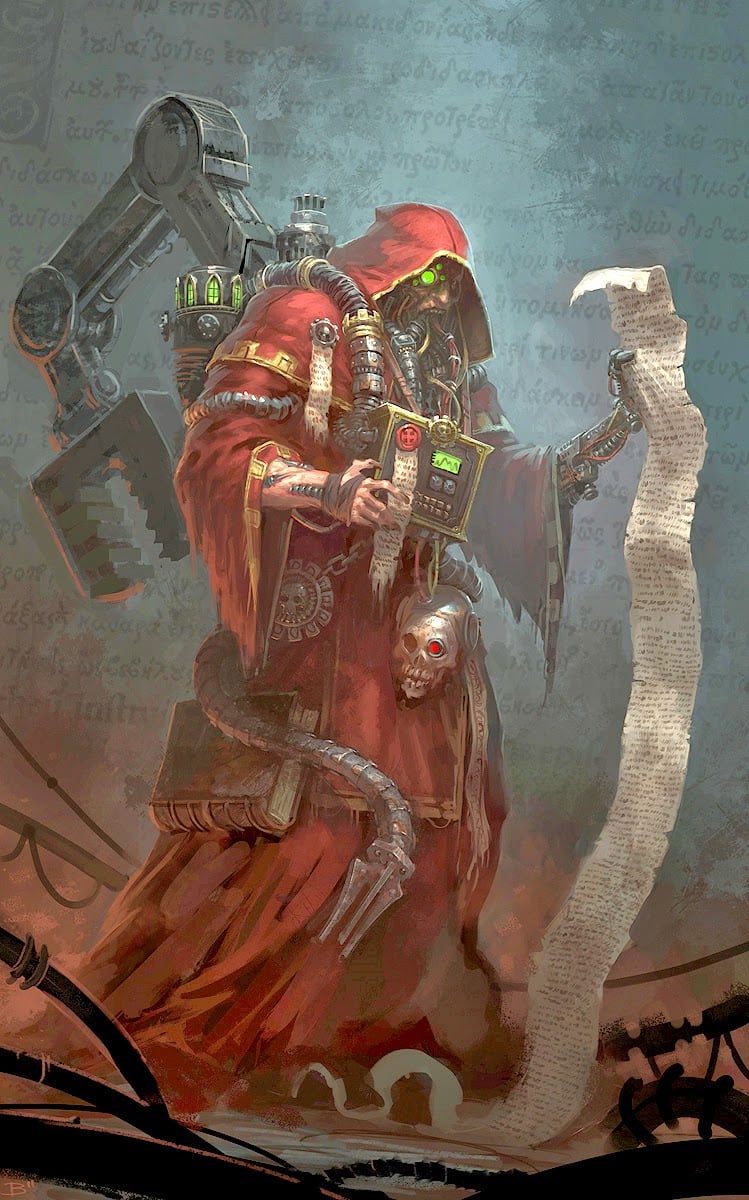A judge in Washington state has blocked video evidence that’s been “AI-enhanced” from being submitted in a triple murder trial. And that’s a good thing, given the fact that too many people seem to think applying an AI filter can give them access to secret visual data.
This actually opens an interesting debate.
Every photo you take with your phone is post processed. Saturation can he boosted, light levels adjusted, noise removed, night mode, all without you being privy as to what’s happening.
Typically people are okay with it because it makes for a better photo - but is it a true representation of the reality it tried to capture? Where is the line of the definition of an ai-enhanced photo/video?
We can currently make the judgement call that a phones camera is still a fair representation of the truth, but what about when the 4k AI-Powered Night Sight Camera does the same?
My post is more tangentially related to original article, but I’m still curious as what the common consensus is.
Computational photography in general gets tricky because it relies on your answer to the question “Is a photograph supposed to reflect reality, or should it reflect human perception?”
We like to think those are the same, but they’re not. Your brain only has a loose interest in reality and is much more focused on utility. Deleting the irrelevant, making important things literally bigger, enhancing contrast and color to make details stand out more.
You “see” a reconstruction of reality continuously updated by your eyes, which work fundamentally differently than a camera.Applying different expose settings to different parts of an image, or reconstructing a video scene based on optic data captured over the entire video doesn’t capture what the sensor captured but it can come much closer to representing what the human holding the camera perceived.
Low light photography is a great illustration of this, because we see a person walk from light to dark and our brains will shamelessly remember what color their shirt was and that grass is green and update your perception, as well as using a much longer “exposure” time to capture more light data to maintain color perception in low light conditions, even though we might not have enough actual light to make those determinations without clues.I think most people want a snapshot of what they perceived at the moment.
I like the trend of the camera capturing the image, and also storing the “plain” image. There’s also capturing the raw image data, which is basically a dump of the cameras optic sensor data. It’s basically what the automatic post processing is tweaking, and what human photographers use to correct light balance and stuff.Great points! Thanks for expanding. I agree with your point that people most often want a recreation of what was perceived. Its going to make this whole AI enhanced eviidence even more nuanced when the tech improves.
I think the “best” possible outcome is that AI images are essentially treated as witness data, as opposed to direct evidence. (Best is meant in terms of how we treat AI enhanced images, not justice outcomes. I don’t think we should use them for such things until they’re significantly better developed, if ever)
Because the image is essentially at that point a neural networks interpretation of the image that it captured, which is functionally similar to a human testifying to what they believe they saw in an image.
I think it could have a use if used in conjunction with the original or raw image, and the network can explain what drive it’s interpretation, which is a tricky thing for a lot of neural network based systems.
That brings it much closer to how doctors are using them for imaging analysis. It doesn’t supplant the original, but points to part of it with an interpretation, and a synopsis of why it things that blob is a tumor/gun.
Every photo you take with your phone is post processed.
Years ago, I remember looking at satellite photos of some city, and there was a rainbow colored airplane trail on one of the photos. It was explained that for a lot of satellites, they just use a black and white imaging sensor, and take 3 photos while rotating a red/green/blue filter over that sensor, then combining the images digitally into RGB data for a color image. For most things, the process worked pretty seamlessly. But for rapidly moving objects, like white airplanes, the delay between the capture of red/green/blue channel created artifacts in the image that weren’t present in the actual truth of the reality being recorded. Is that specific satellite method all that different from how modern camera sensors process color, through tiny physical RGB filters over specific subpixels?
Even with conventional photography, even analog film, there’s image artifacts that derive from how the photo is taken, rather than what is true of the subject of the photograph. Bokeh/depth of field, motion blur, rolling shutter, and physical filters change the resulting image in a way that is caused by the camera, not the appearance of the subject. Sometimes it makes for interesting artistic effects. But it isn’t truth in itself, but rather evidence of some truth, that needs to be filtered through an understanding of how the image was captured.
Like the Mitch Hedberg joke:
I think Bigfoot is blurry, that’s the problem. It’s not the photographer’s fault. Bigfoot is blurry, and that’s extra scary to me.
So yeah, at a certain point, for evidentiary proof in court, someone will need to prove some kind of chain of custody that the image being shown in court is derived from some reliable and truthful method of capturing what actually happened in a particular time and place. For the most part, it’s simple today: i took a picture with a normal camera, and I can testify that it came out of the camera like this, without any further editing. As the chain of image creation starts to include more processing between photons on the sensor and digital file being displayed on a screen or printed onto paper, we’ll need to remain mindful of the areas where that can be tripped up.
The crazy part is that your brain is doing similar processing all the time too. Ever heard of the blindspot? Your brain has literally zero data there but uses “content-aware fill” to hide it from you. Or the fact, that your eyes are constantly scanning across objects and your brain is merging them into a panorama on the fly because only a small part of your field of vision has high enough fidelity. It will also create fake “frames” (look up stopped-clock illusion) for the time your eyes are moving where you should see a blur instead. There’s more stuff like this, a lot of it manifests itself in various optical illusions. So not even our own eyes capture the “truth”. And then of course the (in)accuracy of memory when trying to recall what we’ve seen, that’s an entirely different can of worms.
Fantasitc expansion of my thought. This is something that isn’t going to be answered with an exact scientific value but will have to decided based on our human experiences with the tech. Interesting times ahead.
I was wondering that exact same thing. If I take a portrait photo on my Android phone, it instantly applies a ton of filters. If I had taken a picture of two people, and then one of those people murders the other shortly afterwards, could my picture be used as evidence to show they were together just before the murder? Or would it be inadmissible because it was an AI-doctored photo?
We can currently make the judgement call that a phones camera is still a fair representation of the truth
No you can’t. Samsung’s AI is out there now and it absolutely will add data to images and video in order to make them look better. Not just adjust an image but actually add data…on it’s own. If you take an off angle photo and then tell it to straighten it it will take your photo, re-orient, and then “make up” what should have been in the corner. It will do the same thing for video. With video it also has the ability flat out add frames in order to do the slow-motion effect or smooth out playback if the recording was janky.
Samsung has it out there now so Apple and rest of the horde will surely be quick in rolling it out.
This is what I was wondering about as I read the article. At what point does the post processing on the device become too much?
When it generates additional data instead of just interpolating captured data
What would you classify google or apple portrait mode as? It’s definitely doing something. We can probably agree, at this point it’s still a reasonably enhanced version of what was really there, but maybe a Snapchat filter that turns you into a dog is obviously too much. The question is where in that spectrum is the AI or algorithm too much?
How long until we got upscalers of various sorts built into tech that shouldn’t have it? For bandwidth reduction, for storage compression, or cost savings. Can we trust what we capture with a digital camera, when companies replace a low quality image of the moon with a professionally taken picture, at capture time? Can sport replays be trusted when the ball is upscaled inside the judges’ screens? Cheap security cams with “enhanced night vision” might get somebody jailed.
I love the AI tech. But its future worries me.
Dehance! [Click click click.]
Just print the damn thing!
That scene gets replayed in my mind three or four times a month.
It will wild out for the foreseeable future until the masses stop falling for it in gimmicks then it will be reserved for the actual use cases where it’s beneficial once the bullshit ai stops making money.
Lol, you think the masses will stop falling for it in gimmicks? Just look at the state of the world.
Probably not far. NVidia has had machine learning enhanced upscaling of video games for years at this point, and now they’ve also implemented similar tech but for frame interpolation. The rendered output might be 720p at 20FPS but will be presented at 1080p 60FPS.
It’s not a stretch to assume you could apply similar tech elsewhere. Non-ML enhanced, yet still decently sophisticated frame interpolation and upscaling has been around for ages.
Nvidias game upscaling has access to game data and also training data generated by gameplay to make footage that is appealing to the gamers eye and not necessarily accurate. Security (or other) cameras don’t have access to this extra data and the use case for video in courts is to be accurate, not pleasing.
Your comparison is apples to oranges.
Security (or other) cameras don’t have access to this extra data
Samsung’s AI on their latest phones and tablets does EXACTLY what @MrPoopbutt@lemmy.world is describing. It will literally create data including parts of scenes and even full frames, in order to make video look better.
So while a true security camera may not be able to do it there’s now widely available consumer products that WILL. You’re also forgetting that even Security Camera footage can be processed through software so footage from those isn’t immune to AI fiddling either.
Would that not fall under the “enhanced” evidence that is banned by this court decision?
No, I think you misunderstood what I’m trying to say. We already have tech that uses machine learning to upscale stuff in real-time, but I’m not that it’s accurate on things like court videos. I don’t think we’ll ever get to a point where it can be accurate as evidence because by the very nature of the tech it’s making up detail, not enhancing it. You can’t enhance what isn’t there. It’s not turning nothing into accurate data, it’s guessing based on input and what it’s been trained on.
Prime example right here, this is the objectively best version of Alice in Wonderland, produced by BBC in 1999, and released on VHS. As far as I can tell there was never a high quality version available. Someone used machine learning to upscale it, and overall it looks great, but there are scenes (such as the one that’s linked) where you can clearly see the flaws. Tina Majorino has no face, because in the original data, there wasn’t enough detail to discern a face.
Now we could obviously train a model to recognise “criminal activity”, like stabbing, shooting, what have you. Then, however, you end up with models that mistake one thing for another, like scratching your temple turning into driving while on the phone, now if instead of detecting something, the model’s job is to fill in missing data we have a recipe for disaster.
Any evidence that has had machine learning involved should be treated with at least as much scrutiny as a forensic sketch, while while they can be useful in investigations, generally don’t carry much weight as evidence. That said, a forensic sketch is created through collaboration with an artist and a witness, so there is intent behind those. Machine generated artwork lacks intent, you can tweak the parameters until it generates roughly what you want, but it’s honestly better to just hire an artist and get exactly what you want.
Here is an alternative Piped link(s):
Piped is a privacy-respecting open-source alternative frontend to YouTube.
I’m open-source; check me out at GitHub.
Cheap security cams with “enhanced night vision” might get somebody jailed.
Might? We’ve been arresting the wrong people based on shitty facial recognition for at least 5 years now. This article has examples from 2019.
On one hand, the potential of this type of technology is impressive. OTOH, the failures are super disturbing.
Not all of those are the same thing. AI upscaling for compression in online video may not be any worse than “dumb” compression in terms of loss of data or detail, but you don’t want to treat a simple upscale of an image as a photographic image for evidence in a trial. Sport replays and hawkeye technology doesn’t really rely on upscaling, we have ways to track things in an enclosed volume very accurately now that are demonstrably more precise than a human ref looking at them. Whether that’s better or worse for the game’s pace and excitement is a different question.
The thing is, ML tech isn’t a single thing. The tech itself can be used very rigorously. Pretty much every scientific study you get these days uses ML to compile or process images or data. That’s not a problem if done correctly. The issue is everybody is both assuming “generative AI” chatbots, upscalers and image processers are what ML is and people keep trying to apply those things directly in the dumbest possible way thinking it is basically magic.
I’m not particularly afraid of “AI tech”, but I sure am increasingly annoyed at the stupidity and greed of some of the people peddling it, criticising it and using it.
AI-based video codecs are on the way. This isn’t necessarily a bad thing because it could be designed to be lossless or at least less lossy than modern codecs. But compression artifacts will likely be harder to identify as such. That’s a good thing for film and TV, but a bad thing for, say, security cameras.
The devil’s in the details and “AI” is way too broad a term. There are a lot of ways this could be implemented.
AI-based video codecs are on the way.
Arguably already here.
Look at this description of Samsungs mobile AI for their S24 phone and newer tablets:
AI-powered image and video editing
Galaxy AI also features various image and video editing features. If you have an image that is not level (horizontally or vertically) with respect to the object, scene, or subject, you can correct its angle without losing other parts of the image. The blank parts of that angle-corrected image are filled with Generative AI-powered content. The image editor tries to fill in the blank parts of the image with AI-generated content that suits the best. You can also erase objects or subjects in an image. Another feature lets you select an object/subject in an image and change its position, angle, or size.
It can also turn normal videos into slow-motion videos. While a video is playing, you need to hold the screen for the duration of the video that you want to be converted into slow-motion, and AI will generate frames and insert them between real frames to create a slow-motion effect.
I don’t think AI codecs will be anything revolutionary. There are plenty of lossless codecs already, but if you want more detail, you’ll need a better physical sensor, and I doubt there’s anything that can be done to go around that (that actually represents what exists, not an hallucination).
It’s an interesting thought experiment, but we don’t actually see what really exists, our brains essentially are AI vision, filling in things we don’t actually perceive. Examples are movement while we’re blinking, objects and colors in our peripheral vision, the state of objects when our eyes dart around, etc.
The difference is we can’t go back frame by frame and analyze these “hallucinations” since they’re not recorded. I think AI enhanced video will actually bring us closer to what humans see even if some of the data doesn’t “exist”, but the article is correct that it should never be used as evidence.
I don’t think loss is what people are worried about, really - more injecting details that fit the training data but don’t exist in the source.
Given the hoopla Hollywood and directors made about frame-interpolation, do you think generated frames will be any better/more popular?
Han shot first.
Over Greedo’s dead body.
Correct!
The real question is could we ever really trust photographs before AI? Image manipulation has been a thing long before the digital camera and Photoshop. What makes these images we see actually real? Cameras have been miscapturing image data for as long as they have existed. Do the light levels in a photo match what was actually there according to the human eye? Usually not. What makes a photo real?
It’s already being used for things it shouldn’t be.
This is the best summary I could come up with:
A judge in Washington state has blocked video evidence that’s been “AI-enhanced” from being submitted in a triple murder trial.
And that’s a good thing, given the fact that too many people seem to think applying an AI filter can give them access to secret visual data.
Lawyers for Puloka wanted to introduce cellphone video captured by a bystander that’s been AI-enhanced, though it’s not clear what they believe could be gleaned from the altered footage.
For example, there was a widespread conspiracy theory that Chris Rock was wearing some kind of face pad when he was slapped by Will Smith at the Academy Awards in 2022.
Using the slider below, you can see the pixelated image that went viral before people started feeding it through AI programs and “discovered” things that simply weren’t there in the original broadcast.
Large language models like ChatGPT have convinced otherwise intelligent people that these chatbots are capable of complex reasoning when that’s simply not what’s happening under the hood.
The original article contains 730 words, the summary contains 166 words. Saved 77%. I’m a bot and I’m open source!
Jesus Christ, does this even need to be pointed out!??
The layman is very stupid. They hear all the fantastical shit AI can do and they start to assume its almighty. Thats how you wind up with those lawyers that tried using chat GPT to write up a legal brief that was full of bullshit and didnt even bother to verify if it was accurate.
They dont understand it, they only know that the results look good.
The layman is very stupid. They hear all the fantastical shit AI can do and they start to assume its almighty. Thats how you wind up with those lawyers that tried using chat GPT to write up a legal brief that was full of bullshit and didnt even bother to verify if it was accurate.
Especially since it gets conflated with pop culture. Someone who hears that an AI app can “enhance” an image might think it works like something out of CSI using technosmarts, rather than just making stuff up out of whole cloth,
Unfortunately it does need pointing out. Back when I was in college, professors would need to repeatedly tell their students that the real world forensics don’t work like they do on NCIS. I’m not sure as to how much thing may or may not have changed since then, but based on American literacy levels being what they are, I do not suppose things have changed that much.
you might be referring to the CSI Effect
Its certainly similar in that CSI played a role in forming unrealistic expectations in student’s minds. But. Rather than expecting more physical evidence in order to make a prosecution, the students expected magic to happen on computers and lab work (often faster than physically possible).
AI enhancement is not uncovering hidden visual data, but rather it generates that information based on previously existing training data and shoe horns that in. It certainly could be useful, but it is not real evidence.
ENHANCE !
Yes. When people were in full conspiracy mode on Twitter over Kate Middleton, someone took that grainy pic of her in a car and used AI to “enhance it,” to declare it wasn’t her because her mole was gone. It got so much traction people thought the ai fixed up pic WAS her.
Don’t forget people thinking that scanlines in a news broadcast over Obama’s suit meant that Obama was a HOLOGRAM and ACTUALLY A LIZARD PERSON.
Its not actually worse than eyewitness testimony.
This is not an endorsement if AI, just pointing out that truth has no place in a courtroom, and refusing to lie will get you locked in a cafe.
Too good, not fixing it.
I met a student at university last week at lunch who told me he is stressed out about some homework assignment. He told me that he needs to write a report with a minimum number of words so he pasted the text into chatGPT and asked it about the number of words in the text.
I told him that every common text editor has a word count built in and that chatGPT is probably not good at counting words (even though it pretends to be good at it)
Turns out that his report was already waaaaay above the minimum word count and even needed to be shortened.
So much about the understanding of AI in the general population.
I’m studying at a technical university.
I’m studying at a technical university.
AI is gonna fuck up an entire generation or more.
Of course, not everyone is technology literate enough to understand how it works.
That should be the default assumption, that something should be explained so that others understand it and can make better, informed, decisions. .
There’s people who still believe in astrology. So, yes.
And people who believe the Earth is flat, and that Bigfoot and the Loch Ness Monster exist, and there are reptillians replacing the British royal family…
People are very good at deluding themselves into all kinds of bullshit. In fact, I posit that they’re better even at it than learning the facts or comprehending empirical reality.
Good god, there are still people who believe in phrenology!
We do not need AI pulling a George Lucas.
AI can make any blurry criminal look like George Lucas with the right LoRAs.
You’d think it would be obvious you can’t submit doctored evidence and expect it to be upheld in court.
If only it worked that way in practice eh.
We found these marijuanas in his pocket, they were already in evidence bags for us even.
The model that can separate the fact from fiction and falsehood will be worth far more than any model creating fiction and falsehood.
For example, there was a widespread conspiracy theory that Chris Rock was wearing some kind of face pad when he was slapped by Will Smith at the Academy Awards in 2022. The theory started because people started running screenshots of the slap through image upscalers, believing they could get a better look at what was happening.
Sometimes I think, our ancestors shouldn’t have made it out of the ocean.
“Just so we’re clear guys, fake evidence is not allowed”
Here is an alternative Piped link(s):
Piped is a privacy-respecting open-source alternative frontend to YouTube.
I’m open-source; check me out at GitHub.
Wait, when did that become ok to do in The first place
Think about how they reconstructed what the Egyptian Pharoahs looks like, or what a kidnap victim who was kidnapped at age 7 would look like at age 12. Yes, it can’t make something look exactly right, but it also isn’t just randomly guessing. Of course, it can be abused by people who want jurys to THINK the AI can perfectly reproduce stuff, but that is a problem with people’s knowledge of tech, not the tech itself.
Unfortunately, the people with no knowledge of tech will then proceed to judge if someone is innocent or guilty.
Yeah, this is a really good call. I’m a fan of what we can do with AI, when you start looking at those upskilled videos with a magnifying glass… It’s just making s*** up that looks good.
Sure, no algorithm is able to extract any more information from a single photo. But how about combining detail caught in multiple frames of video? Some phones already do this kind of thing, getting multiple samples for highly zoomed photos thanks to camera shake.
Still, the problem remains that the results from a cherry-picked algorithm or outright hand-crafted pics may be presented.
enhance
enhance
enhance
Nor evidence, for that matter


